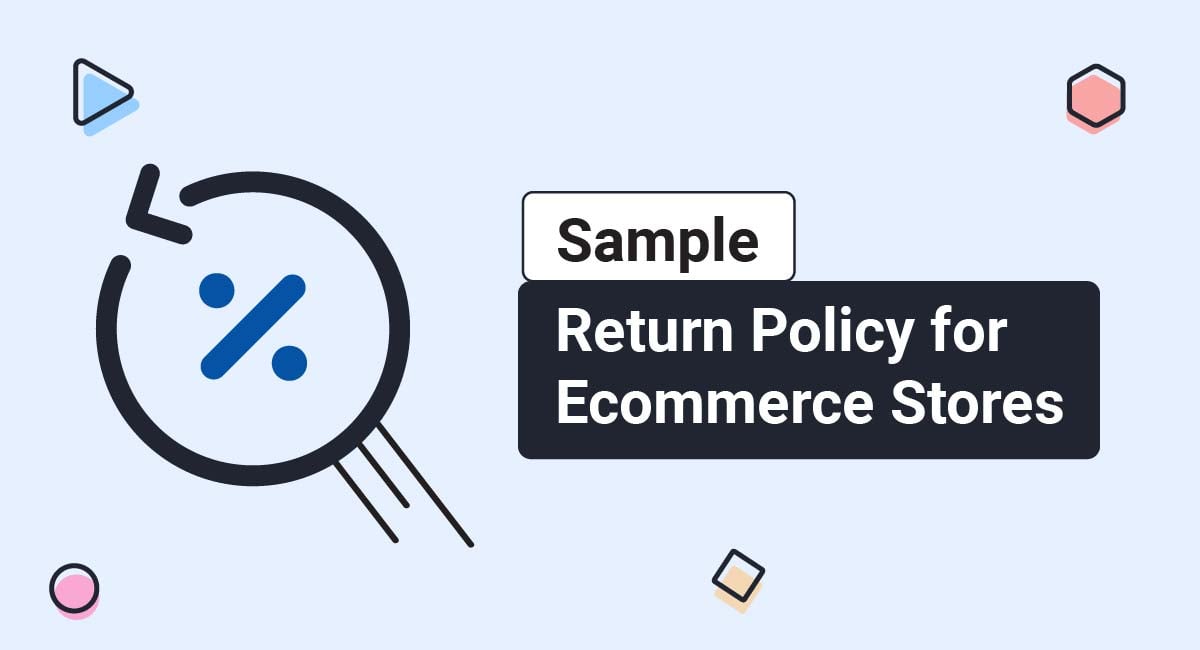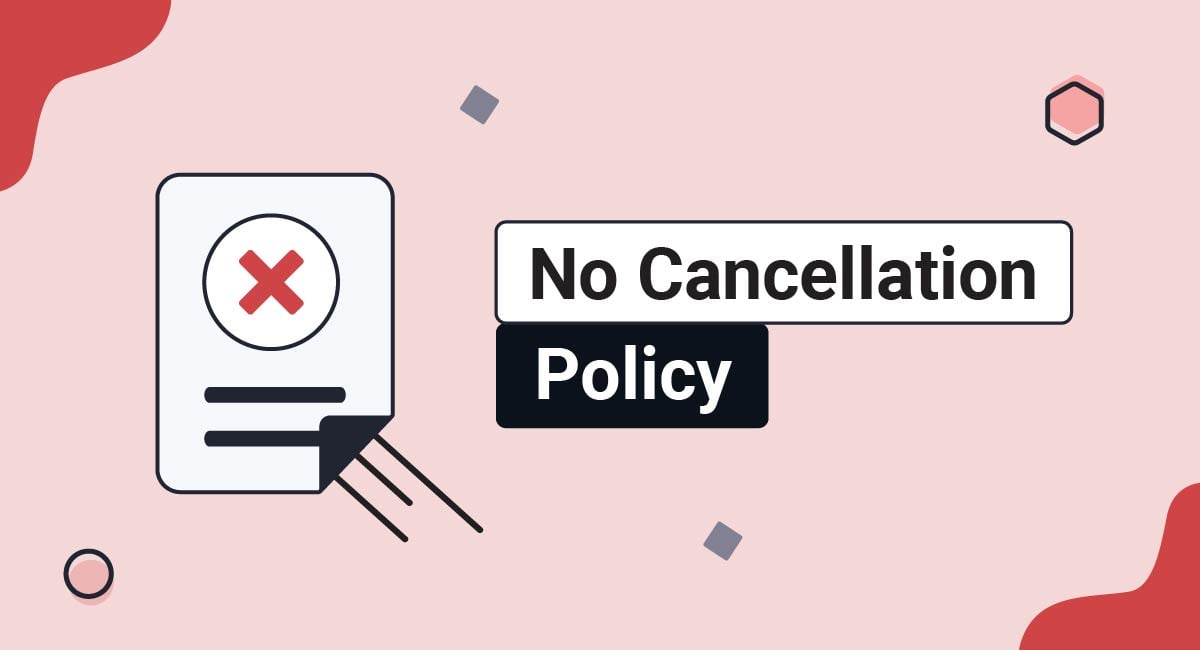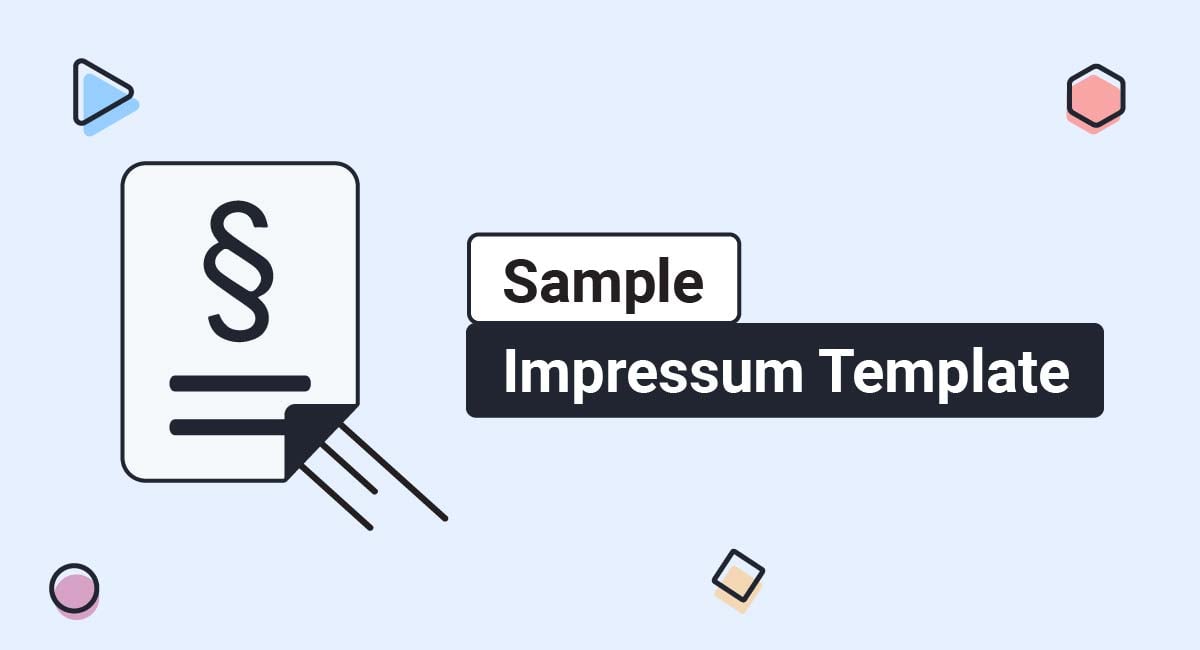A Return and Refund Policy is a policy that describe your business's process, policies and requirements for accepting returns.
In this article we'll discuss Return and Refund Policies for ecommerce stores, whether you're legally required to have one, what to include in one, where you should display it, and more.
We've also put together a Sample Return and Refund Policy Template that you can use to help write your own.
Use our Return & Refund Policy Generator to generate a Return and Refund Policy for your store. Just follow these steps:
-
At Step 1, select where your Return & Refund Policy will be used.
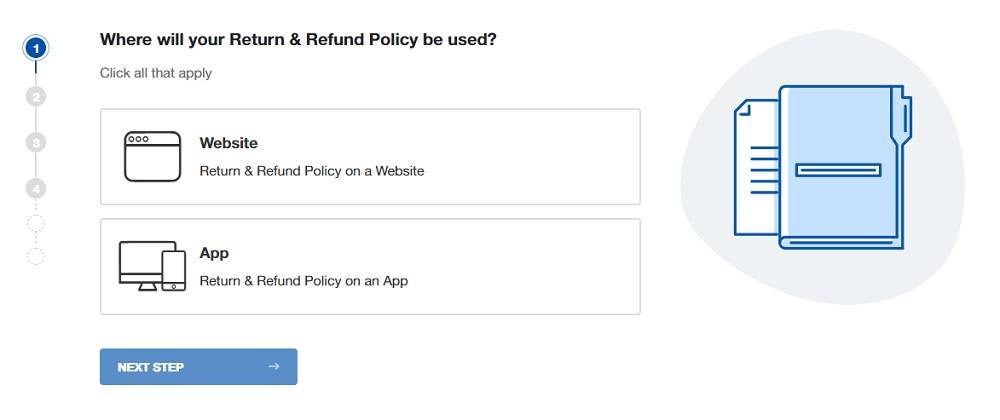
-
At Step 2, add information about your website/app and business.
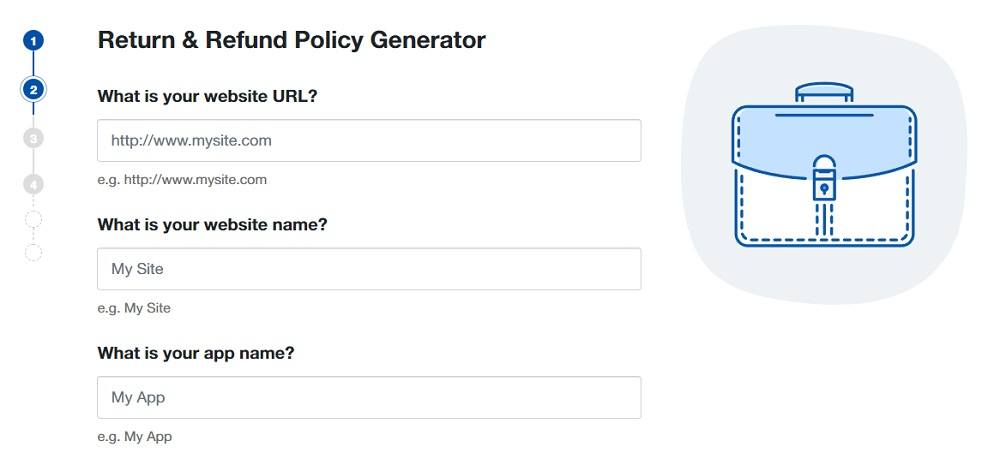
-
Answer some questions about your business practices.
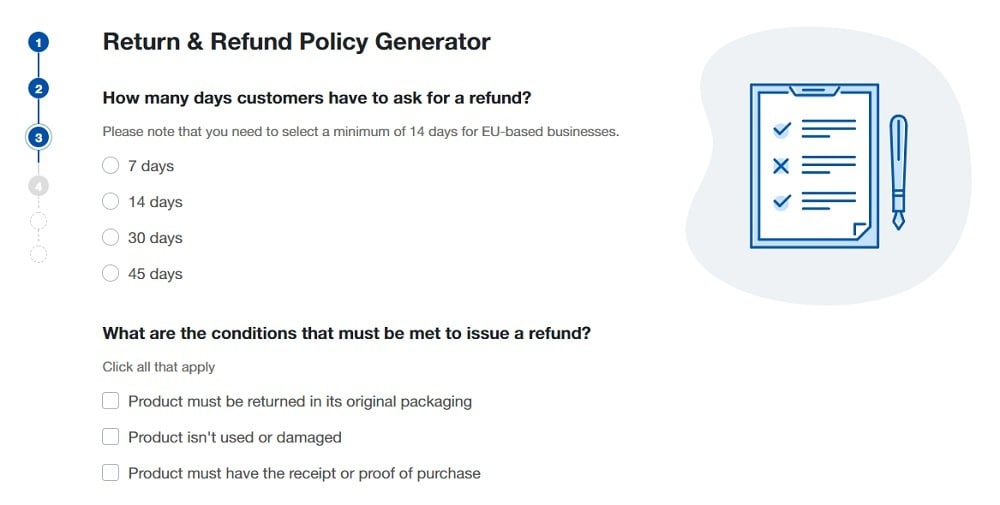
-
Enter an email address where you'd like to receive your Return and Refund Policy and click "Generate."
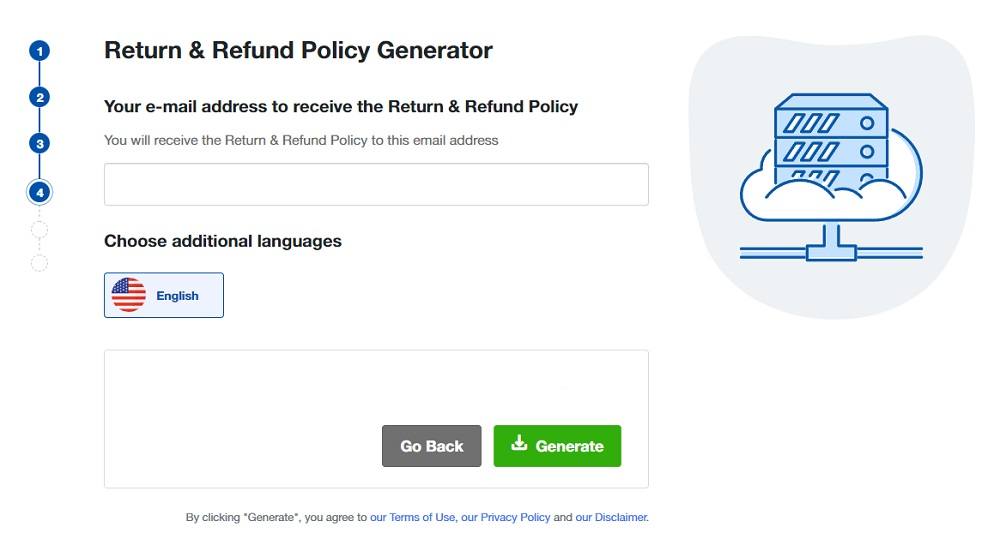
Done! You'll be able to instantly access and download your new Return and Refund Policy.
- 1. What are Return and Refund Policies?
- 1.1. Why are Return and Refund Policies Important?
- 1.2. Standard Ecommerce Return Rates
- 2. Are Return and Refund Policies Legally Required?
- 3. What to Include in Your Return and Refund Policy
- 3.1. Keep the Language of Your Policy Clear and Simple
- 3.2. Specify a Time Frame for Returns
- 3.3. Define the Conditions Under Which You'll Accept Returns
- 3.4. Initiating a Return
- 3.5. How are Refunds Issued: Credit, Original Payment Method?
- 3.6. Disclose any Fees Associated with Returns
- 4. Where to Display Your Return and Refund Policy
- 5. FAQs on Ecommerce Return and Refund Policies
- 6. Summary
- 7. Download Sample Return & Refund Policy Template
- 7.1. Sample Return & Refund Policy Template (HTML Text Download)
- 7.2. Sample Return & Refund Policy Template (PDF Download)
- 7.3. Sample Return & Refund Policy Template (Word DOCX Download)
- 7.4. Sample Return & Refund Policy Template (Google Docs Download)
- 7.5. More Templates
What are Return and Refund Policies?
A Return and Refund Policy is a policy that dictates under what conditions customers can return products they've purchased from your ecommerce store and whether you'll reimburse them or not. It will also let your customers know the time frame within which your company can accept returns.
Why are Return and Refund Policies Important?
Return and Refund Policies for ecommerce stores have been proven to increase the number of people who end up making a purchase once they're on your website.
In addition, having a Return and Refund Policy in place can help reduce your expenses when it comes to return deliveries. For instance, consider the fact that in the United States alone, Statista's statistics show that return deliveries cost businesses $550 Billion between 2017 and 2020.
That's a 75.2% increase over five years ago.
People are often hesitant to buy online, which can lead to low conversion rates and sales. Having this policy helps alleviate some of that hesitation since they know they can return the product and get a refund if their expectations aren't met while making a not-in-person purchase.
Of course, customers may be unhappy with their order for many reasons. It might arrive damaged, it was the wrong size or it didn't meet all their expectations. They may request a refund or a replacement.
These requests can be overwhelming without a system to handle them. Think of all the time necessary to handle customer service emails and the money your company may have to spend to replace the returned product. Now think about those expenses just after Black Friday or Christmas!
Thankfully, the solution is relatively simple. You can make returns and exchanges less of a problem by writing and posting a solid Return and Refund Policy for your website. Moreover, you can help increase customer loyalty and potentially generate new revenue by doing so.
Standard Ecommerce Return Rates
There is no single return rate for ecommerce that you should accept as typical. Return rates for ecommerce vary greatly by product category. Indeed, no two industries are the same.
With that said, some statistics show average return rates for certain product categories, such as the following:
- Clothing and shoes: 30 to 40%
- Food: 7%
- Furniture: 5%
- Home electronics: 10%
- Average of all ecommerce returns: 15-30%
Regardless of the size of your operations, it can be hard to decide the right approach for your business with regard to your Return and Refund Policy.
Many ecommerce companies can't afford to offer free returns like big online retailers. However, that doesn't mean you can't provide your customers with a policy they'll appreciate.
Are Return and Refund Policies Legally Required?
The United States doesn't have a federal law which governs returns or refunds. No state laws require one either, although some states do have regulations about where you must place your policy if you choose to write one. There are also laws in the EU that deal with returns and refunds.
Even if you aren't required by law to have one, there are still good reasons to have a Return and Refund Policy in place.
For example, your customers expect to be informed about your policies and to know that you'll adhere to terms that have become commonplace within the ecommerce industry.
What to Include in Your Return and Refund Policy
Your Return and Refund Policy should include important details about when you accept returns, what the conditions of return are, and how you issue refunds.
Remember that people are not inclined to read lengthy and boring legal documents online. However, it is vital to give all necessary information.
It's a good idea to divide your Return and Refund Policy into smaller parts. This will make the document easier to read, help customers find what they need, and protect you legally.
When considering what to put in your Return and Refund Policy, think about the fact that there are many advantages to ensuring it is customer-centric. Innovative businesses know that a customer-centric return program is an effective marketing tool.
In other words, the evidence shows that businesses that have a Return and Refund Policy that benefits customers often have higher return purchase rates than those which do not.
A return or exchange may actually cost a business on the first purchase. However, a better customer experience will lead to higher retention rates and long-term revenue growth.
To ensure that happens, here's what you need to know about how to create your Return and Refund Policy.
Keep the Language of Your Policy Clear and Simple
Before we get into what you should include in your Return & Refund Policy, here's a general rule to keep in mind:
- Write the same way that you speak (normal, flowing language and not legalese)
- If you're not a lawyer, don't pretend to be one
- Even if you hire a lawyer, speak with that individual and get them to legally binding language that customers understand and give your Return and Refund Policy a personality
Your Return and Refund Policy should be good to go as long as you ensure the writing is clear, concise, and not open to interpretation.
Specify a Time Frame for Returns
Letting your customers know precisely how long they have to return a product is a crucial element to include in your Return and Refund Policy. Typically, ecommerce stores offer a 15- to 30-day window in which customers can return a product and ask for a refund. Some businesses extend that period up to 90 days.
Notice how Solo Stove specifies that it will only provide customers with in-store credit if returns are made after 30 days:
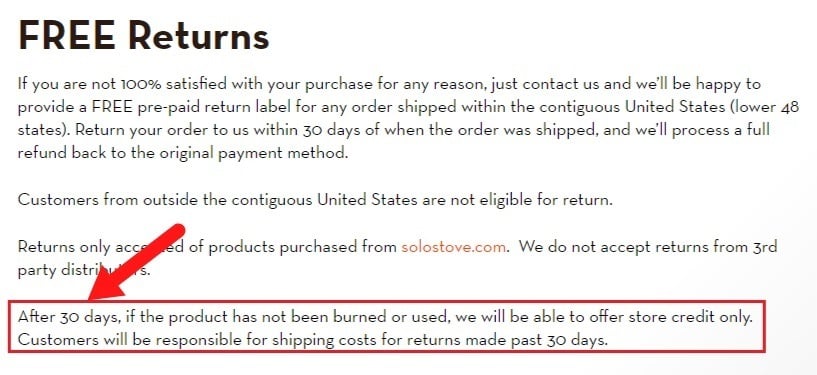
Regardless of the time frame you choose, ensuring that you actually have a time frame is essential. You don't want people trying to return products or demanding refunds months or years beyond the date of purchase.
Some larger stores learned this lesson the hard way.
Define the Conditions Under Which You'll Accept Returns
When you are writing your Return and Refund Policy you should ensure that you include a section that outlines under what specific conditions you'll accept returns and make refunds.
If your customer is immediately unhappy with a purchase or if the product isn't working correctly, accepting a return and providing a refund may be reasonable. However, it's quite another thing when the buyer uses, damages, or alters the product, and over a longer period of time.
For instance, this is how Burrow states that its customers are subject to a 20 percent service fee if returns are not in the original packaging:
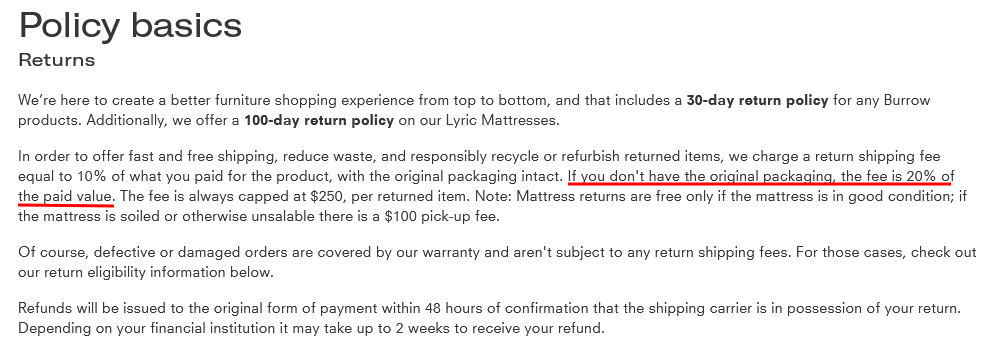
If you don't include that information, your customers might try to return whatever they bought in a condition that makes a resale impossible. In that case, you'd obviously have to absorb a loss.
Initiating a Return
You need to let your customers know ahead of time if there are any requirements they need to meet before you can process their returns, and how to go about initiating the return process.
This is commonly seen when you use a Return Merchandise Authorization (RMA) system and require shoppers to contact you to start a return and get a return authorization number.
Here's a clause in a Return and Refund Policy that outlines how this process will work:
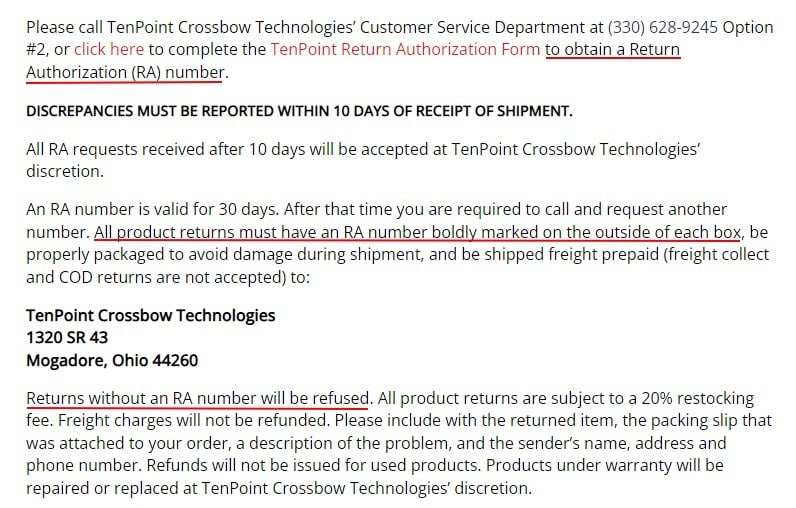
This system allows you to ask your customers for information and images of the products they wish to return. Once you review the information and pictures, you can choose to either accept or deny the return. It also allows you to provide your customers with a shipping label once you've made an authorization.
How are Refunds Issued: Credit, Original Payment Method?
Before they return a product, customers want to know what your compensation plan is. Some customers will ask for a full refund, while others may accept in-store credit. If you run an ecommerce store, you have to choose between the two options.
Here's an example of how you can specify if you only offer in-store credit:
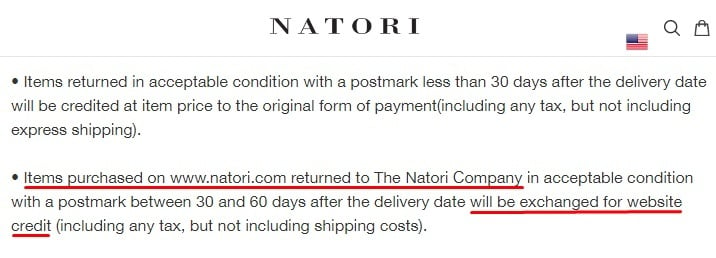
A best practice is to provide a full refund as long as your customers meet your Return and Refund Policy's requirements. Of course, you can always offer in-store credit under exceptional circumstances or for specific types of returns.
Whatever you choose, make sure you outline your policy in detail and in straightforward, easy-to-understand language.
Disclose any Fees Associated with Returns
Who will pay for return shipping and restocking costs if a customer returns an item purchased from your store? You should clearly state these things in your Return and Refund Policy.
Autograph Foliages states its policy like this:
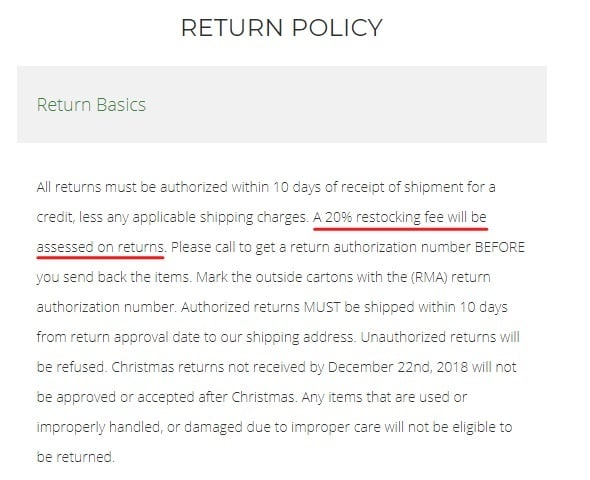
Recall that from your customer's perspective, it's not fair to receive a product that's defective in some way only to discover after the fact that they're responsible for paying to have it sent back.
To prevent misunderstandings, if you do require your customers to pay for return shipping, ensure that you clearly state that requirement. If you don't, you could face many upset customers who will have zero qualms about writing bad reviews.
Where to Display Your Return and Refund Policy
Here are some key places to put links to your Return and Refund Policy:
- FAQ page
- Checkout page
- Shopping cart
- Product page
- Website chat tool
- Within other legal documents (i.e. Terms and Conditions agreements)
- Your website's footer
It doesn't suffice just to have a well-written Return and Refund Policy. Customers must be able to see it before buying from your ecommerce store.
Remember that if the customer isn't aware that you have a Return and Refund Policy, or if you've placed the Return and Refund Policy in an obscure location of your website, you could lose that customer for life if there's a dispute and you tell them they should've read your policy.
To save time dealing with customers who have not seen the policy, include links to it in several places on your website that are easy to find.
Here's an example of linking your policy to a website footer with other important links and information:
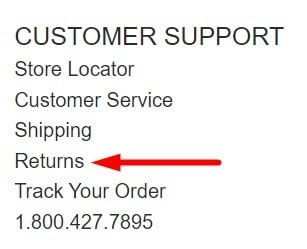
And here's how you can include it near the checkout or complete-purchase section of your ecommerce site:

Remember, your customers will know what to expect before they make a purchase if your policy regarding returns is clearly stated on your website.
While there will be some customers who are dissatisfied with your policies no matter what they are, it is unlikely that they will be the only ones if they can't find your Return and Refund Policy at all.
FAQs on Ecommerce Return and Refund Policies
As previously stated, having a good Return & Refund Policy in place can help you:
- Minimize the overall costs of refunds and replacements
- Increase customer loyalty
- Potentially increase sales
Here is a list of frequently asked questions that you may find useful.
While there isn't a law requiring ecommerce stores to have a Return Policy, you may need one if you wish to enforce your terms and parameters of returns and refunds.
For example, in the state of New York, if a retailer does not provide a Return & Refund Policy, the retailer will be required to accept returns and give refunds for all merchandise returned within 30 days of purchase. If you wish to limit this in any way, you will need to create and post a Return Policy with your own custom terms.
Another reason for having a Return Policy even if not required by law is that most consumers prefer to shop at retailers with a clearly-posted Return Policy. This is especially important when shopping online, as more issues are likely when purchasing something without being able to see it in person first.
If you don't have a Return Policy, you may be at the mercy of state laws regulating return and refund timeframes. You may also lose potential customers who are concerned about not being able to return a product if they need or want to.
There are two main benefits to having a Return Policy.
First, you will be able to control your return terms. If you don't post a Return Policy, some laws require you to provide a minimum timeframe to accept all returns.
Secondly, you will gain the confidence of potential customers and convert more sales. Shoppers are far more likely to do business with companies that have and post a Return Policy.
Your Return Policy should include the following information:
- How many days customers have to initiate a return
- How they should initiate a return
- Conditions of returns (must be unworn, in original packaging, etc.)
- Restrictions on returnable items (no returns on software or undergarments, etc.)
- What form you provide a refund in (original form of payment, store credit only, etc.)
- What party pays return shipping costs
- If you have any restocking or other fees you deduct from refunds
You should display your Return Policy as a link in your website footer along with your other important legal agreements and policies.
You should also add a short paragraph to your Terms and Conditions agreement where you summarize your Return Policy and link to the full policy.
You may want to add a link to your Return Policy at the final checkout screen so users have another chance to review your policy before finalizing the purchase.
You do not need to get agreement to your Return Policy to enforce it. Simply posting it will be enough to make your policy enforceable.
However, if you want to go above and beyond to make sure your bases are covered, you can add an unticked checkbox to the final checkout screen of your ecommerce store that users will have to check to show they "Agree to your Return Policy."
Also, by including your Refund Policy in your Terms and Conditions agreement and getting agreement from customers to be bound by your terms, you're by default getting agreement to your Refund Policy since it's part of the Terms and Conditions.
Summary
A Return and Refund Policy is important for any business that sells products online. It protects the seller from bad customers and ensures that buyers know exactly what to expect when they order a product.
If you want your ecommerce store to prosper, then it's imperative that you have a clear Return and Refund Policy in place.
Keep the following crucial points in mind when drafting your Return & Refund Policy:
- A Return and Refund Policy isn't legally required, but it's a best practice to include one on your website
- If you have a Return and Refund Policy, it should be placed in prominent and easily accessed locations on your website
- The Return and Refund Policy should be written in easy to understand language
Be sure to include the following elements in your Return and Refund Policy:
- A time frame for returns
- The conditions under which you'll accept returns
- List your store's requirements for returns
- State whether you provide in-store credit for returns or if you provide partial or full refunds (or a combination, etc.)
- Disclose any fees associated with returns
When all is said and done, your policy should be considered an extension of your business. Your business' core values, attitudes and tone should be represented within that document.
Remember that when it comes to ecommerce stores, a Return and Refund Policy may be the most read document on the website. This policy is not only a way to explain your return process and requirements, but it's also a way to make a good impression.
Take your time to create a game plan. You can brainstorm ideas, research, create drafts, and seek advice. Also, make sure you map out your goals before you start.
Finally, use what you have learned here to help create a unique return policy for your company. A template can also help to guide you in the process.
Download Sample Return & Refund Policy Template
Generate a Return & Refund Policy in just a few minutes
A template can be an excellent starting point that provides plenty of structure to write your own policy. However, we recommend an alternative, which is to use our Return and Refund Policy Generator. It's a highly effective tool, which will ask you all the right questions about your eCommerce store. It will then use your answers to custom-build a Return and Refund Policy that's just right for your needs and requirements.
The Sample Return & Refund Policy Template is free for download. It includes these sections:
- Returns. Inform users how many days they have to return the product and in which conditions: same package, and so on.
- Refunds. Inform users how will they receive the refund for the product: credit on their credit/debit card or on the same original method of payment they've used.
- Shipping. Inform users who will pay for shipping.
Sample Return & Refund Policy Template (HTML Text Download)
You can download the Sample Return & Refund Policy Template as HTML code below. Copy it from the box field below (right-click > Select All and then Copy-paste) and then paste it on your website pages.
Sample Return & Refund Policy Template (PDF Download)
Download the Sample Return & Refund Policy Template as a PDF file
Sample Return & Refund Policy Template (Word DOCX Download)
Download the Sample Return & Refund Policy Template as a Word DOCX file
Sample Return & Refund Policy Template (Google Docs Download)
Download the Sample Return & Refund Template as a Google Docs document
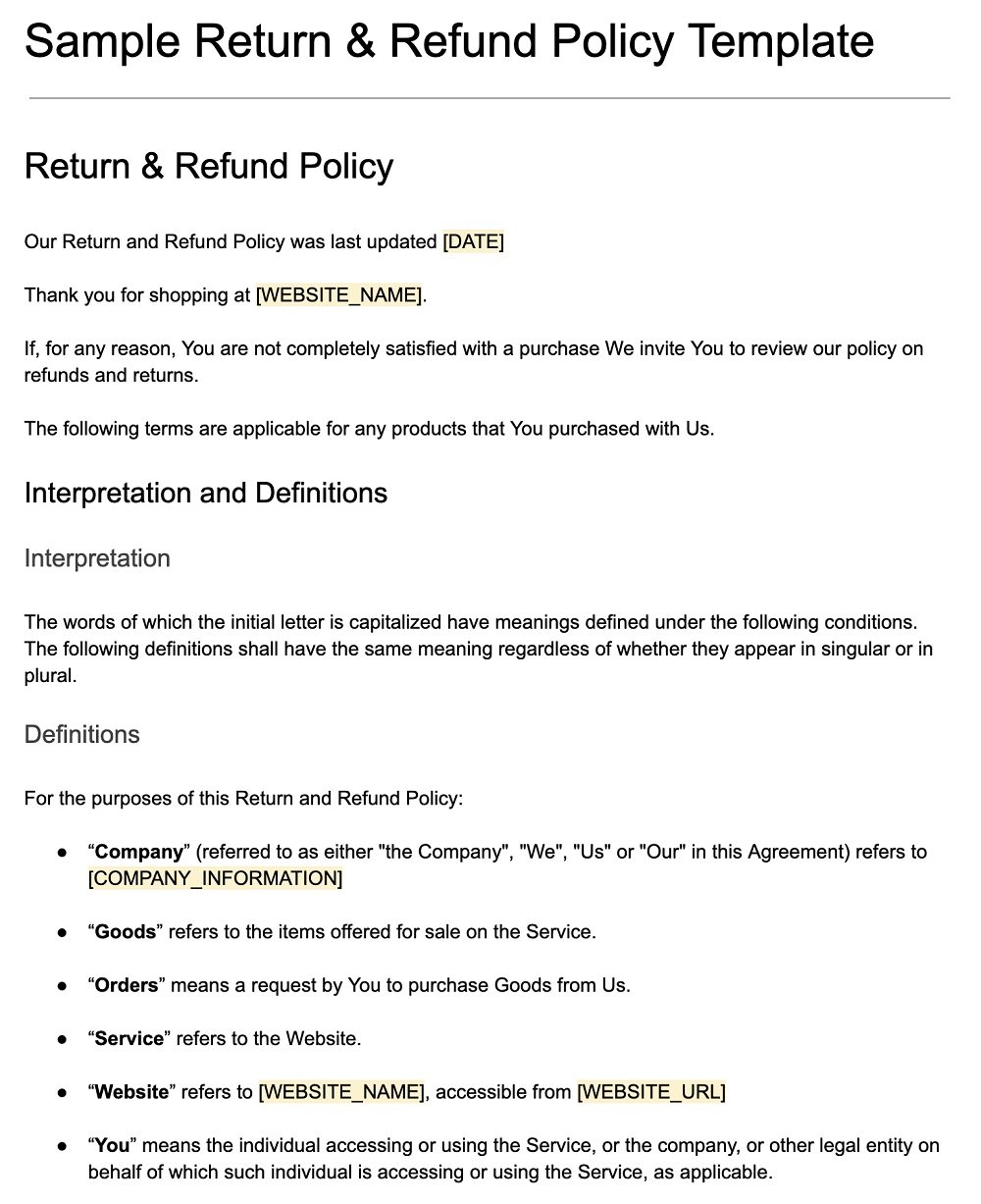
More Templates
More specific Templates are available on our blog.
| Sample Shipping Policy Template | A Shipping Policy for your ecommerce business. |

Comprehensive compliance starts with a Privacy Policy.
Comply with the law with our agreements, policies, and consent banners. Everything is included.
